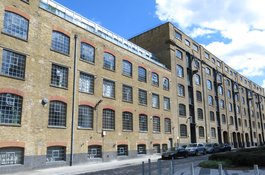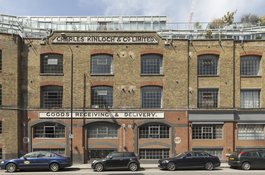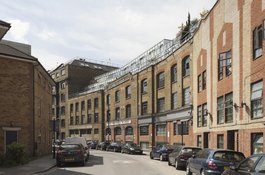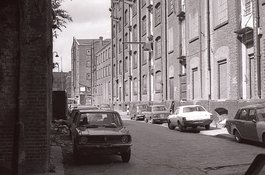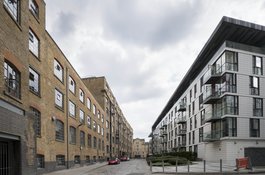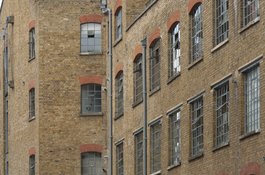The frightening 'sticky-out bit' in Gower's Walk
Contributed by eric on Nov. 1, 2016
Memories of Eric Shorter, b. 1936
Still in existence, the warehouse near the bottom of Gower's Walk on its eastern side had a small jutting-out piece of building that throttled the street in a sense, taking away some of the street width. It is visible on maps of the past. I have always referred to it as ‘the sticky-out bit’. Its function was never clear to me, and I never saw it in use in any sense. But in recent times, I have seen that it is now fitted with a narrow roller blind, and must be some sort of awkward goods in/out facility. As a child this sticky-out bit bothered me, because if I were walking in either direction to/from Hooper Street, then it afforded a hiding place for any of the strange folk who used to be present in Whitechapel at the time. So when passing it, I would tend to hug the Tilbury Warehouse side of the road so as to see waiting strangers before they saw me.
The overall structure of Gower's Walk was that the street was effectively a deep trough bounded by high walls all along. There was nowhere to escape.
The east side of Gower's Walk in the 1950s remembered
Contributed by eric on Nov. 2, 2016
Memories of Eric Shorter, b. 1936
As I walked it, ran it, cycled it, the Gowers Walk that I knew in the early 1950s was structured as I now describe. It runs roughly north/south and was cobbled throughout. From the southern end, the eastern side of Gowers walk consisted roughly of three parts. The first third was occupied by another warehouse, extant in 2011, and converted into lots of little designer places for small industries. This warehouse had a strange extension at one end that jutted out into Gower's Walk, and is still there. It narrowed Gower's Walk a fair bit.
